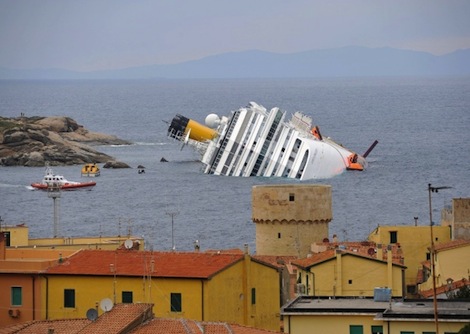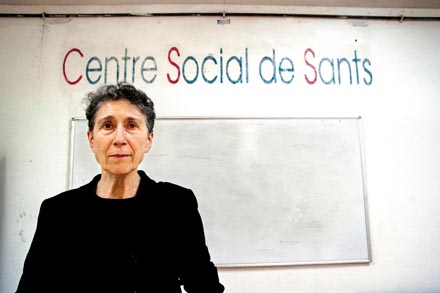“Young people will have to get used to the idea of not having a fixed job for life… what monotony! It is much nicer to change and accept new challenges.”
– Mario Monti, Italian Prime Minister
“The Future is already here; It’s just unevenly distributed.”
– William Gibson
I
After the defeat and seeming disappearance of the student movement in the UK, the developing counter-revolution in North Africa, and the continued absence of a mass movement with any political traction in Europe, the future is looking less inviting than it did a year ago. The articles and communiqués written then have already acquired a bittersweet air of nostalgia. Yet just as we struggle to come to terms with our political slippage, so to do the administrators of capital. Although austerity politics are clearly failing to impress the credit ratings agencies, let alone kick-start a new round of growth, the ideas of the host of analysts, commentators, and academics lining up to plug some kind of “Plan B” to the crisis sound equally hollow. A quiet terror appears to be slipping over a Europe of financial administrators and technocrats haunted by visions of riot and stagnation. It is hard for anyone to believe that an economic recovery might entail even a return to the living standards we once knew, let alone beyond that. We may look back on the living standards of the global North in the golden age of the 1950s and 1960s – maintained, unevenly, via access to debt, into the 2000s – as an historic blip or anomaly, rather than a minimum standard to be surpassed. The decoupling, during the neoliberal era, of the accumulation of capital and the living standards of the majority of the society that produces this accumulation, appears to be accelerating, and increasingly feels irreversible. The view from the global North is a bleak one.
The future is over. This is the central, bold, and stark claim that Franco “Bifo” Berardi makes in his latest book After the Future. Time will continue onwards, but our collective and personal belief in a better future appears to have collapsed. This is a claim made all the more terrifying by its instinctual resonance. After several more years of austerity and crisis, the Invisible Committee’s rather grandiose claim that “everyone agrees that things can only get worse” appears to be meeting history and moving from the realm of polemical theory to common sense. The modernist dream of unending development has shattered. While the markets remain uncertain of future growth prospects and state administrators vacillate between austerity and neo-Keynesianism, the rest of society seems to be in a state of paralysis, punctuated by outbursts of disorganized rage, such as the riots witnessed in various British cities last summer. Bifo claims we are experiencing the rapid decomposition of the European working class through the intensification of precarity, widespread unemployment, and widespread depression. Hyper-exploitation, hyper-tension and the receding hope of a modest pension are the only things left for those still working in the Prozac and caffeine-fuelled economy of the twenty-first century.
II
Bifo’s argument traces the mutating forms that the idea of the future has taken throughout the twentieth century. In order to outline the forms which collective visions of the future have taken one must interrogate the material conditions of the groups producing them. The rise of modernity, Berardi argues, represents a historic break, one where Christian conceptions of progress and time become inverted; rather than living in the ruins of Eve waiting for the rapture, modernity promised the possibility of perpetual improvement in the here and now. Communists, Social-Democrats and Fascists could all agree that heaven could, and would, be built on Earth with human hands. The politics of the future, Bifo is keen to argue, are a distinctly material phenomenon; political struggles, cultural currents and technological developments all influence our ideas of what a future society might look like. These visions reflect the hopes, fears and desires of those developing them. Bifo sets out to trace a path through the twentieth century idea of the future via an analysis of some of its key cultural movements.
For the Italian futurists, where Bifo’s analysis begins, this fusion of politics and technology saw its apex in mechanised “workshops beneath… violent electric moons”. The violence of modernity was glorified and the spread of new technologies such as the auto-mobile and machine tools was seen as the necessary harbinger of a better, more liberated world. This link between technologies and political imaginaries is echoed by what Bifo sees as the last utopian philosophy of the century, the “Wired ideology”. This ideology saw a potential emancipation of humanity via the new technologies and potentials of the internet. This philosophy argued that the horizontal, open and collaborative potential of the internet was destined to unlock the potential of humanity and usher in a new phase of wealth and prosperity. Although not an explicitly antagonistic philosophy, echoes of the Wired analysis of the internet can be seen in the work of Paul Mason and the politics of groups such as WikiLeaks and Anonymous as well as journalists, academics and activists infatuated with the power of Twitter and Facebook as catalyst for revolution.
However, Bifo is not an optimist when it comes to technology. The intertwined tale that is being told is that of the integration of these new technologies within the processes of discipline and production. Whilst the motor engine and the internet both promised a world of reduced work hours and increasing luxury the opposite has been the case. New technologies and organisational techniques have been used in turn to discipline people into the rhythm of the factory and then to fracture this collective body into the manageable fragments needed in today’s ‘flexible and innovative’ economy. The technologies discussed are revealed as intrinsically social, capable of being put to work by various different sections of society. Bifo’s analysis traces the links between artistic and cultural movements such as the proto-fascist futurists and the liberal dreamers of the internet that saw a brighter future ushered in through human ingenuity embodied in technological developments and the implementation of these technologies within the framework of capitalist development.
III
After tracing the history of the idea of the future, Bifo devotes another chapter to the present conjuncture, returning to a core concern within his work: the interplay between technology and subjectivity within capitalism. The role of information technology is central to the analysis put forward. Compared to the optimistic immanence of Hardt and Negri, or the liberatory affirmation of Paul Mason, Bifo’s analysis of the impact of IT systems on the social body is far less cheerful. Bifo sees these technologies as deeply invested within processes of capital accumulation and state discipline; a specific form of capitalism which Bifo labels “semio-capital” has emerged that puts our “neurophysical energies to work and submits them to the speed of electronic machinery.” IT technology has helped spread precarious work conditions, and mobilizes our thoughts, dreams and desires (Marx’s “general intellect”) for capital accumulation. Widespread depression is the response to this mismatch between cyberspace and cybertime, as the social body struggles to cope with the flows of information and emotional affects we encounter in our daily lives.
This fracturing of the social body has had an effect on our ability to organise politically. The potential for solidarity in the workplace and the rest of our lives has been radically reduced. Semiocapital produces subjects incapable of solidarity, or of composing into a class for itself. Outbursts of social rage such as the London riots or the student protests of winter 2010-2011 are more likely than long-term antagonistic movements. Indeed, we only need to look at the difficulty faced by those involved in the Occupy moment, as they attempt to cohere into a political movement capable of confronting the state and capital. These developments within contemporary capitalism, Bifo argues, are starting to foreclose the possibility of collective politics with traction in the world.
Bifo’s vision is bleak. Many economists are now willing to admit that austerity politics are failing, while Keynesianism or the continued belief in the promises of the information economy seem equally dysfunctional. Instead of the return of growth and steadily improving living conditions, Bifo foresees an economic recovery in which growth resumes with no concurrent social distribution. A future of increasingly predatory finance capital, repressed surplus populations, militarised green zones, universal precarity, and widespread depression is already here. “Recovery,” for most of us, means “a new round of social devastation.” The crisis of political legitimacy is also the universalizing of a bitter cynicism: only 42% of people in the UK say they are interested in politics. The political is dead, the post-political appears as permanent.
IV
What does the end of the future mean for radical politics? It is at this point that Bifo’s argument becomes problematic. In an argument that intersects with groups such as Tiqqun, Bifo argues that we must see “Communism as a necessity in the collapse of capital.” Distant from the voluntarism of previous forms of Communist politics, this “post-growth Communism” will be best understood as a necessary response to capital’s refusal of labour. Cut adrift from the “opportunity” to work, with welfare systems dismantled, Bifo argues that we will witness the proliferation of zones of autonomy responding to the needs of an increasingly precarious and superfluous social body. Communist politics will emerge from an exodus, both voluntary and compulsory, from a stagnating and increasingly predatory state-capital nexus. This exodus is both social, in the development of an alternative infrastructure, and personal, in the withdrawal from the hyper-stimulation of the semiotic economy. Bifo abandons hope in collective contestation at the level of the political.
Bifo’s politics could be described as a kind of “lifeboat communism.” As the crisis ripples, mutates, and deepens, Bifo sees the role of communism as the creation of spaces of solidarity to blunt the worst effects of the crisis of social reproduction. Gone is the demand for a better world for all, the liberation of our collective social wealth, or the unlocking of the social potentials of technology. Rather, Bifo’s politics are based around insulating a necessarily small portion of society from the dictates of capital. By withdrawing from the political sphere, we accept the likelihood of losing the final scraps of the welfare state and concede the terrain of the political to zombie politics and predatory capital. Rather than seeking new forms of organization to re-enter the political stage, Bifo seems to suggest that we seek shelter beneath it as best we can.
This shying away from the political stage is the weakness at the heart of the book. Recent eruptions of political struggle have captured the collectiveimagination because they demonstrate that political contestation is still possible today, in spite of the obstacles Bifo has described. The Occupy movement and the uprisings in the Middle East and North Africa have resonated with all those who still have hope in collective struggle. Although these movements have encountered varying problems, to which we must develop solutions, they dispel the idea of an unchangeable present. The current blockages to successful organising have been shown to be strategic and tactical, not terminal. Misdiagnosing the current inertia of post-political public life as a terminal condition leads the left towards an evacuation of the political, while we should instead reassert its primacy. If we abandon any hope of fighting in, against, and beyond the existing architecture of the state and capital, and instead seek refuge in small communes, and go-slow practices, we abandon all real hope of a generalized, or generalizable, emancipatory politics. Although Bifo’s analysis of the difficulties of collective action resonates with all of us who have attempted to organize struggles in the past few decades, the proposal for a simple withdrawal from capitalism is a bleak politics indeed – which, at its most optimistic, calls for an orderly default by portions of the proletariat. The horizons of communist politics appear much narrower when capitalism is no longer seen as the repository of a vast store of social wealth awaiting collective redistribution, but rather redefined as an unassailable site of universal and permanent austerity combined with widening social redundancy.
It is hard to imagine a network of self-organized projects and systems supporting the majority of the population in the context of an increasingly predatory capitalism. Emerging from the and isolated leftist scenes, this lifeboat communism will by its very nature have a limited carrying capacity, as the anarchist experience in post-Katrina New Orleans attests. The lifeboats that Bifo calls for will undoubtedly be too small and makeshift to harbor us all.
The crisis is twofold. It is a crisis of capitalist profitability, and of an increasingly precarious and surplus global proletariat whose reproduction (as both labour and body) is under threat. It is unlikely that the proliferation of communes, squats, food co-ops, file sharers, urban gardeners, and voluntary health services will bring forth a new, better world. But while the current seemingly post-political situation throws up massive obstacles to organizing, there is still a potential for collective contestation. The capitalist state, racked by its own legitimacy crisis and weekly political scandals, is more vulnerable than it appears. We need only recall the period of unexpected hope built by students in Britain, occupiers in Oakland, and vast swathes of North Africa and the Middle East during the past two years. These movements were mobilised through the betrayal of a vision of the future – but alongside their rage, they put forth a hope which can guide our politics.
The task at hand is to unlearn old behaviour and to forge new tactical and organisational weapons for struggle. Bifo’s contribution is a timely and challenging one, but it ultimately leads us back towards a DIY culture and “outreach” politics. As our movements come to terms with these limits, we must also hold onto the belief that luxury for all is possible. The social potential of unfilled blocks of flats, emerging technologies like 3D-printing, and the desires of the millions of underemployed, should remind us of this. This will not be possible without a collective struggle against the state and the demands of capital, one which simultaneously defends what we have and attempts to move beyond it.
A retreat to lifeboat politics is both premature and a self-fulfilling prophecy. While Bifo correctly analyses the current conjuncture – clearly identifying the post-political state, the weakness of the Left, the crisis of profitability and new forms of labour, and their impact on the subject – his political prescriptions lead us in the wrong direction. Just as Bifo does, we place the struggle against work at the center; but we can also seek to liberate social wealth, rather than insulate a lucky few from the ravages of capital. Rather than “No Future,” we must raise a different banner: “The future’s here, it just needs reorganizing.”
Ben Lear is an underemployed researcher living in Manchester, UK. He is an editor of Shift Magazine, and has recently co-authored an article in Occupy Everything! Reflections on Why it’s Kicking off Everywhere. He is a member of Plan C.
Republished with the permission of Viewpoint magazine.



